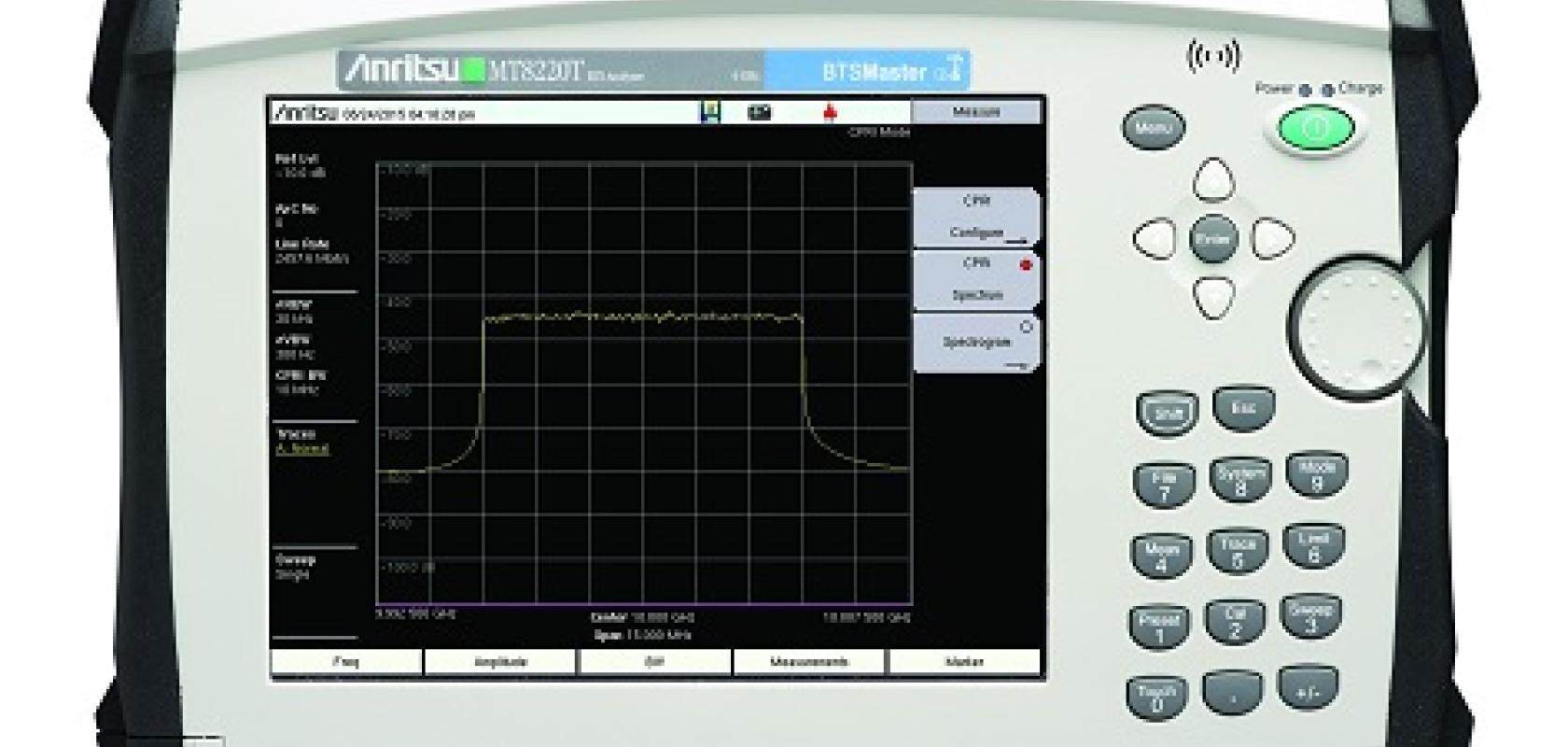Test and measurement specialist Anritsu has introduced a CPRI-based RF measurement option for its BTS Master handheld base station analyser family that can significantly reduce the operational expense (opex) associated with troubleshooting interference at fibre-based cell sites.
Using the fibre-optic link connecting the base station with the antenna, the BTS Master-based CPRI RF measurement test set allows field engineers and technicians to conduct accurate RF measurements on remote radio heads (RRHs) while remaining at ground level, eliminating the considerable expense and time associated with calling a tower crew to conduct interference measurements.
To simplify configuring the CPRI link for RF measurements, Anritsu has developed preconfigured radio setups and an auto detect function in the option. Users can conduct both CPRI spectrum and CPRI spectrogram measurements with the test set.
A sweep speed 10x faster than other solutions in its class allows the BTS Master-based CPRI RF measurement test set to capture bursty signals missed by alternative methods, according to Anritsu. Complementing the sweep speed are two unique features – the ability to tune and pan on a displayed signal, and to zoom into a particular area of interest. Faster sweep speeds and more detailed signal analysis allow field engineers and technicians to more efficiently locate the sources of interference and passive intermodulation (PIM).
The CPRI RF option expands the comprehensive measurement capability of the BTS Master family, which consists of the MT8820T, MT8221B and MT8222B. All the handheld base station analysers have been specifically developed to support 2G/3G/4G wireless networks, and feature more than 30 analysers in one instrument to meet virtually every measurement need.
Anritsu also offers a portfolio of optical transport testers to test and verify the CPRI links. These products can be used to confirm the RRH is powered-up correctly, that the fibres are connected correctly, the condition and cleanliness of the optical connector, and that the link has no excess loss from the RRH to the BBU. The transport testers can also verify that the correct wavelength SFP/SFP+ modules are installed and that the modules support the rate configured.

